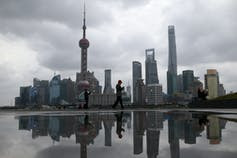Urbanisation in developing nations: a totally various kettle of fish
The patterns of urbanisation in the developing globe in the previous couple of years have diverged significantly from historic trends. For the developed globe, considerable urbanisation was associated with industrialisation. With the cities came the manufacturing facilities.
But today many developing nations, however highly urbanised, lack large commercial industries. Nigeria, for instance, has the same portion of its populace residing in cities as China does.
In our forthcoming paper we find that the traditionally limited connection in between urbanisation and industrialisation damages down for a lot of the developing globe. Particularly, this divergence is reflected in the a great deal of all-natural source exporters that have urbanised without industrialising.
How it happens in all-natural source exporters
We contrasted urbanisation prices to the share of manufacturing and solutions stood for in GDP (2010). This suggests that non-resource exporting nations maintain a limited favorable connection in between industrialisation and urbanisation. This follows the historic organization.
No such connections exist for nations that depend more greatly on all-natural source exports. Several resource-exporters get to 80% urbanisation prices, despite having actually just 20% of their GDP come from manufacturing and solutions.
The break down of the link in between urbanisation and industrialisation is pronounced throughout areas. In Australia or europe and Latin America urbanisation is firmly connected to shares of manufacturing and solutions in GDP. But in Africa and the Center Eastern no such organization appears. Here an enhancing share of natural deposits in GDP is firmly associated with urbanisation.
Our paper makes these correlations more specific, and verifies that they are durable. We used an example of 116 developing nations observed each years from 1960 to 2010. Our study shows that under a variety of specs there's a statistically considerable and financially significant organization in between source exports and urbanisation prices.
In our preferred panel specs, a one standard discrepancy increase in source exports is associated with a 0.51 standard discrepancy increase in the urbanisation rate. Put more simply, it equates right into approximately a 13 portion point increase in urbanisation. Ragam Promo Dan Cara Daftar di King88bet

To verify this sensation, we appearance for proof of a causal link in between resource-exports and urbanisation prices. We catch the effect of resource-led exports on metropolitan development by using new source discoveries and worldwide price shocks as a variable. Think about our approach as a type of "difference-in-difference" estimation.
Over the study period, nations that found new sources are designated to the "therapy" team. An instance is Botswana's ruby exploration in 1968. Nations that don't experience significant source discoveries function as the "control" or contrast team.
Our outcomes are consistent with the cross-section and panel searchings for: source exports perform in truth cause a considerable increase in urbanisation prices. The effect isn't owned by a handful of severe resource-exporters, such as Saudi Arabia. Rather, it holds throughout an entire range of developing countries. The dimension of the approximated effect is quite solid. This suggests that an considerable stun to source exports – from say a exploration – can raise the urbanisation rate by 10-12 portion factors over several years.


